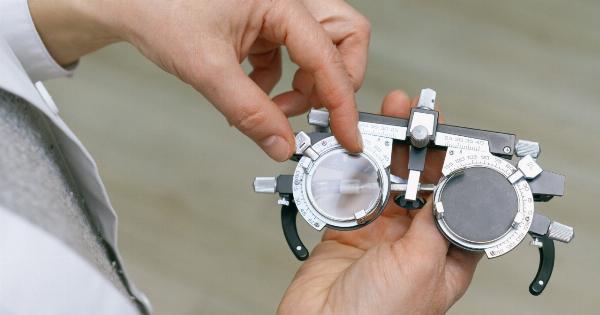Alzheimer’s disease is a neurodegenerative disease that affects millions of people worldwide. It is estimated that in the United States alone, there are 5.8 million people living with Alzheimer’s disease.
The disease is characterized by memory loss, a decline in cognitive abilities, and changes in behavior that affect daily life.
While Alzheimer’s disease is usually diagnosed through a series of cognitive tests and brain imaging, researchers are looking into whether or not an eye exam can reveal the risk of developing Alzheimer’s disease.
The eyes have a direct connection to the brain, and some researchers believe that changes in the eye could be indicative of changes in the brain.
The Connection Between the Eyes and the Brain
The eyes and the brain are deeply connected and function together to create vision.
The retina is the part of the eye that is sensitive to light, and it contains specialized cells called photoreceptors that convert light into electrical signals that travel to the brain. Once the signals reach the brain, they are interpreted as images. The optic nerve is the bridge between the eye and the brain, as it carries the electrical signals from the retina to the brain.
The brain is responsible for interpreting the signals it receives from the retina and creating a visual image. The brain also controls eye movement and is responsible for processing visual information.
Because of this close connection between the eyes and the brain, changes in the eye have the potential to indicate changes in the brain.
The Eye Exam as a Diagnostic Tool for Alzheimer’s Disease
Researchers are exploring whether or not changes in the eye could be an indication of Alzheimer’s disease. One of the ways they are doing this is by studying the retina and other parts of the eye to look for signs of Alzheimer’s disease.
Studies have shown that the retina of people with Alzheimer’s disease is thinner than it is in people without Alzheimer’s disease. This thinning is thought to be caused by the degeneration of cells in the retina.
Additionally, researchers have found that there are changes in the density of blood vessels in the retina of people with Alzheimer’s disease.
Another area of the eye that is being studied as a potential diagnostic tool for Alzheimer’s disease is the lens. The lens of the eye is responsible for focusing light onto the retina and plays a critical role in vision.
Researchers have found that changes in the proteins that make up the lens of the eye could be indicative of Alzheimer’s disease.
While these changes in the eye are currently being studied as potential diagnostic tools for Alzheimer’s disease, they are not yet widely used in clinical settings.
More research is needed to determine how effective these diagnostic tools are and how they can be used to help diagnose Alzheimer’s disease.
The Future of Eye Exams and Alzheimer’s Disease Diagnosis
While the research is ongoing, some experts believe that eye exams could be an important tool in the diagnosis and treatment of Alzheimer’s disease.
Because changes in the eye and changes in the brain are interconnected, changes in the eye could be indicative of changes in the brain. By studying the eye, doctors could potentially diagnose Alzheimer’s disease earlier, which would allow for earlier treatment.
Additionally, eye exams could be used to monitor the progression of Alzheimer’s disease and track how effective treatment is.
By measuring changes in the eye over time, doctors could evaluate the effectiveness of treatment and make adjustments as necessary. This could lead to better outcomes for people living with Alzheimer’s disease.
Conclusion
Alzheimer’s disease is a devastating disease that affects millions of people worldwide. While there is currently no cure for Alzheimer’s disease, researchers are exploring new ways to diagnose and treat the disease.
Eye exams are one area of research that shows promise for early diagnosis and monitoring of the disease. By studying the eye, doctors may be able to diagnose Alzheimer’s disease earlier and create more successful treatment plans.





























